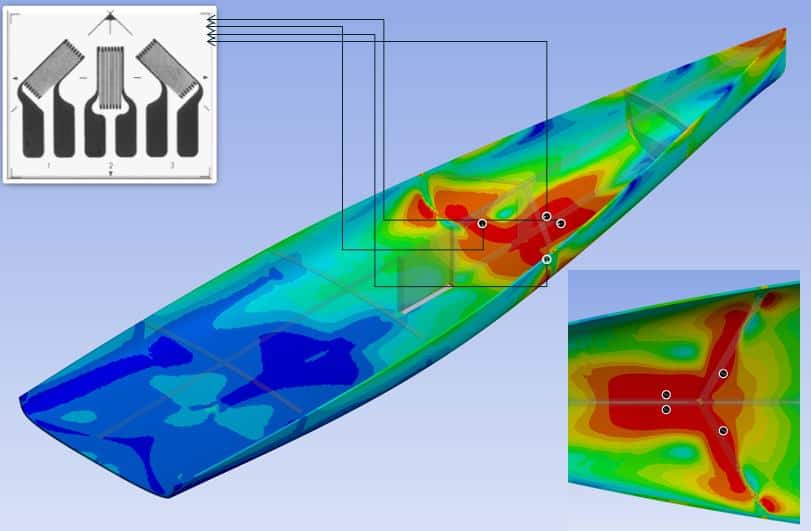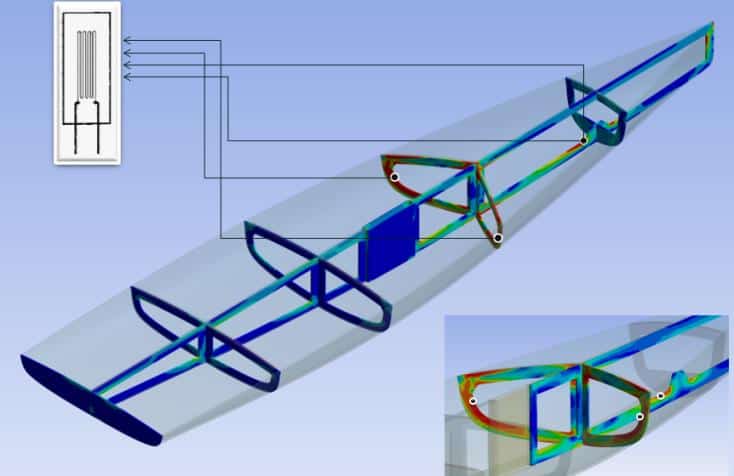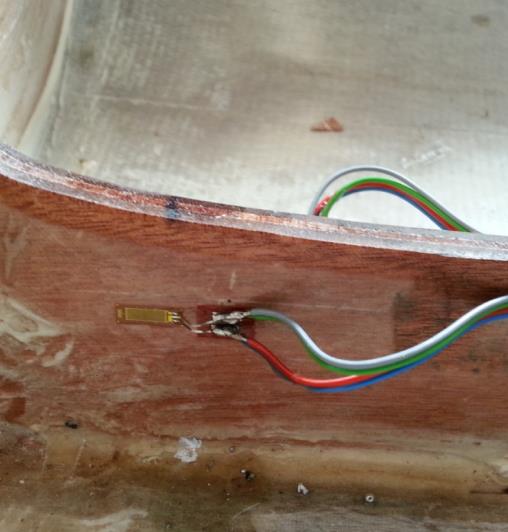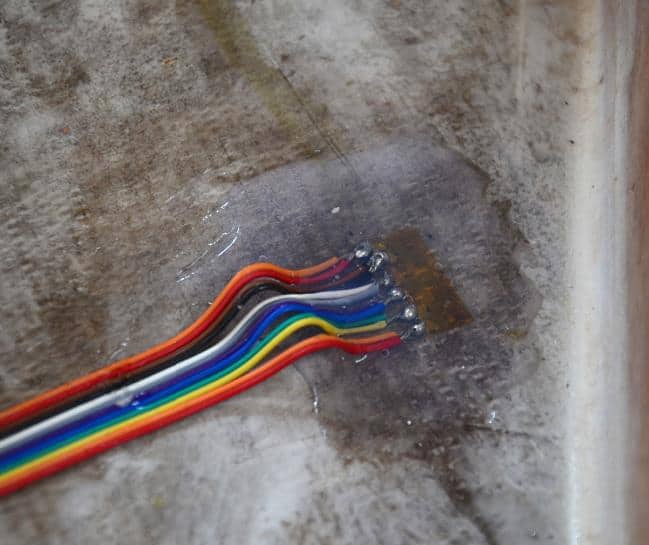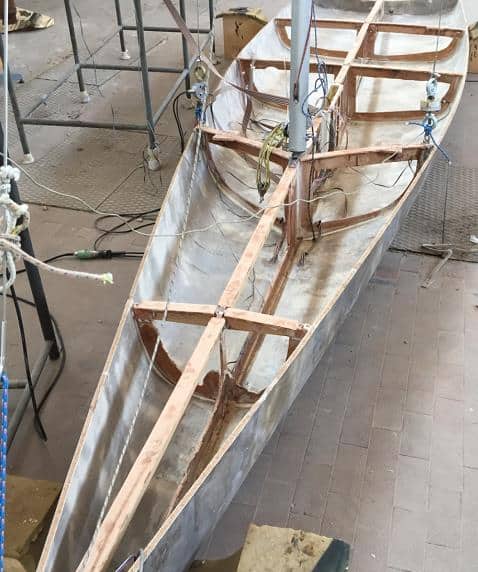Each single grid in all installations was wired up by using a four wires scheme, and protected with polyurethane paint from HBM type PU140 and a silicone sealing layer from HBM type SG250 (fig.3 and 4).
A load configuration was reproduced in the lab, simulating a loading scenario acting on the boat during typical sailing conditions (fig.5).
The measurement of strain gauge signals was carried out using Wheatstone bridges. The acquired signals, sampled over a time window sufficient to achieve a stabilized behavior, were then processed to obtain the complete strain state and to compare it with equivalent numerical FEM results.
The matching of experimental and numerical results was very satisfactory, allowing to conclude that the FEM model is reliable. Moreover, the confidence gained about the reliability of the measured data, has opened the way for an experimental campaign of on-site measurements, during real sailing conditions. This procedure will require the connection of a strain gauge controller with a transponder and a GPS system.
